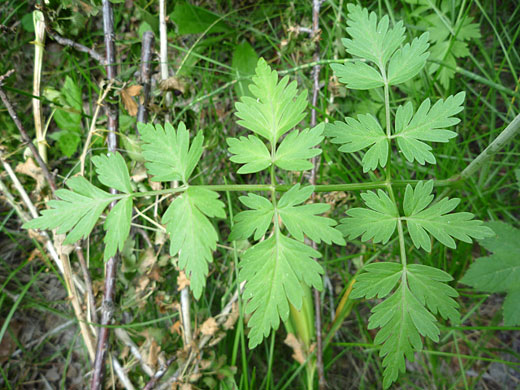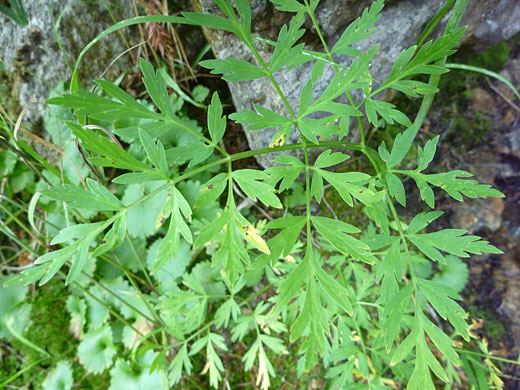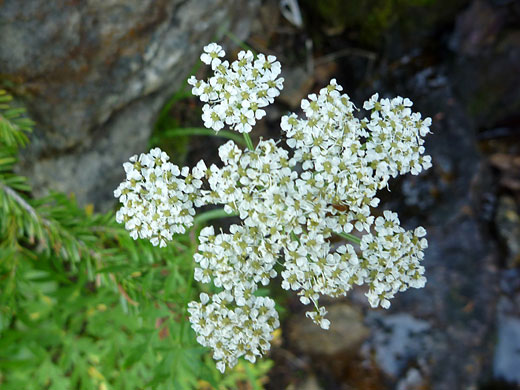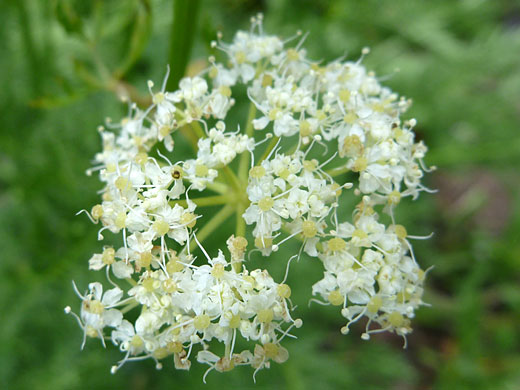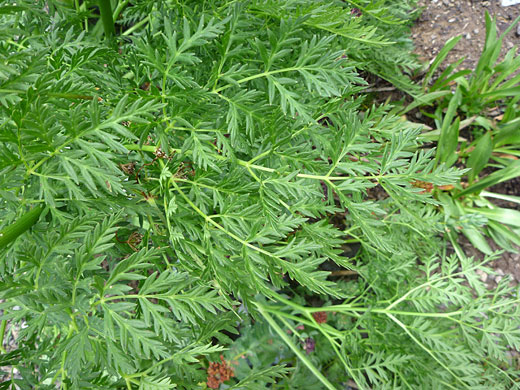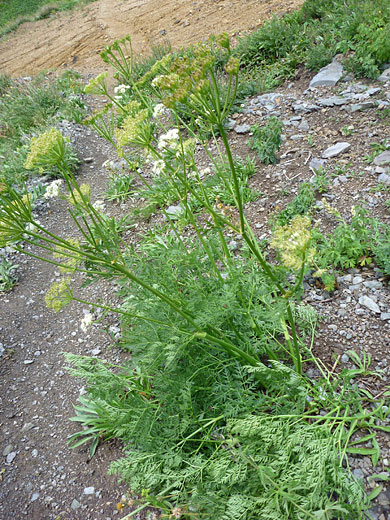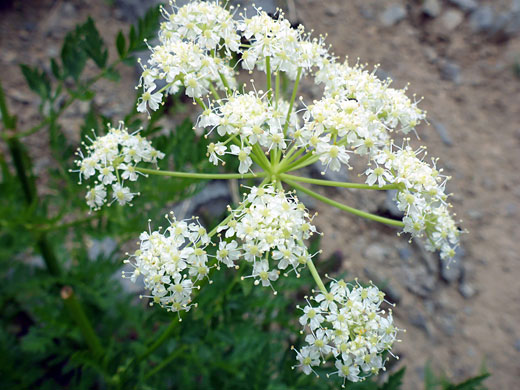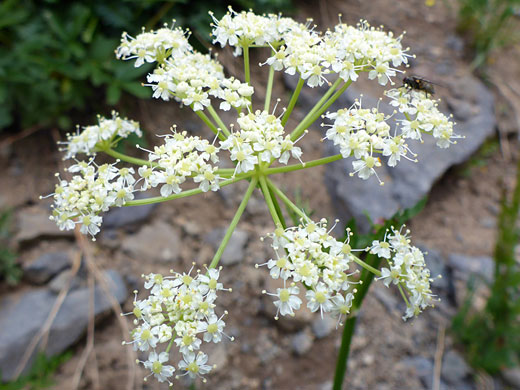
Umbel of small white flowers of ligusticum porteri (osha), along the Mosca Pass Trail in Great Sand Dunes National Park, Colorado
Common names:
Loveroot, osha, lovage, wild parsley, mountain carrot
Family:
Scientific name:
Ligusticum porteri
Main flower color:
Range:
The Great Basin and southern Rocky Mountain states, including Arizona
Height:
Between 3 and 7 feet
Habitat:
Mountainous locations; meadows, partly shaded places in forests
Leaves:
Finely divided several times; up to 2 feet long
Season:
June to August
Ligusticum porteri is a typical plant of the apiaceae family, characterized by a dense mass of finely divided leaves and a compound, flat-topped umbel of tiny white flowers, up to 4 inches in diameter. The carrot-like leaves grow at the base and most of the way up the tall, branched, ridged, green stems, which rise to a height of 6 feet or more, and the inflorescence can contain several dozen flower clusters. The bases of the leaf stems have a reddish brown tint. There are no bracts at the base of the umbel, or at the top of the pedicels. Individual flowers have five petals, and measure about a quarter of an inch in diameter.
This is a common species of high elevation areas (up to 10,000 feet) in the west, named in 1873 after botanist Thomas Porter. Loveroot has a long history of medicinal use.
This is a common species of high elevation areas (up to 10,000 feet) in the west, named in 1873 after botanist Thomas Porter. Loveroot has a long history of medicinal use.
All Contents © Copyright The American Southwest | Comments and Questions | Contribute | Site Map

